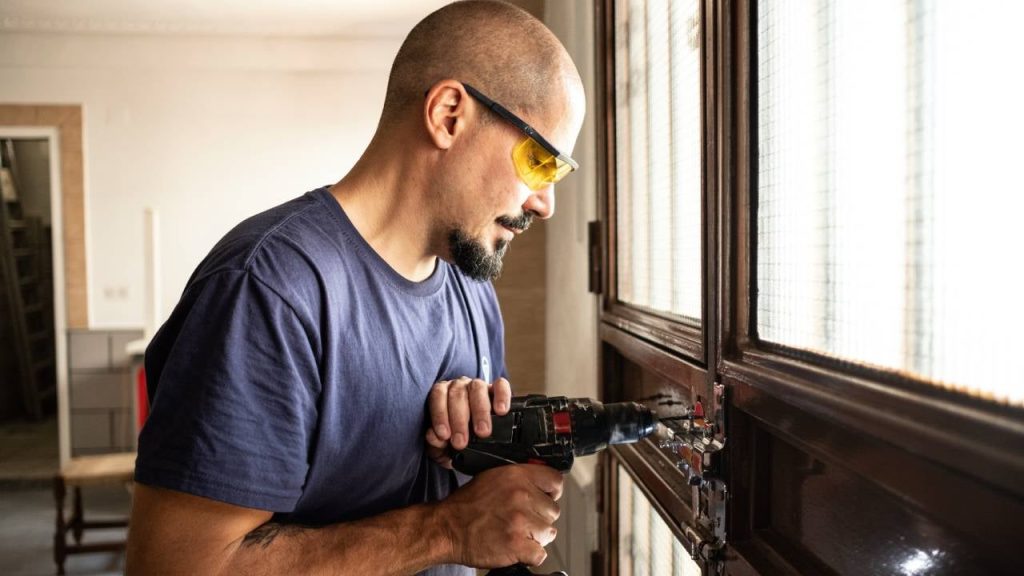Getting a home improvement loan is not too complex, but the process can be intensive — especially if you aren’t sure what type of product you need. Fortunately, your budget and credit score will be the main factors in determining the steps you need to take to apply for a home improvement loan.
How to take out a home improvement loan
Home improvement loans are just like any personal loan. While every lender will differ in eligibility requirements, there are general requirements to be aware of before starting the application process.
Research home improvement loans
There are four main options to fund home improvements:
- Personal loan.
- Credit card.
- Home equity loan.
- Home equity line of credit.
Each has its own benefits and drawbacks. Personal loans and credit cards are unsecured and good for small- to midsize projects. Home equity loans and lines of credit are secured by your home’s equity. So the more equity you have, the more you can borrow — but you risk foreclosure if you default.
Do your research to determine which option best suits your needs and fits your budget. Since every home improvement project is different, you will need to make the decision based on how much you have to spend and how flexible your costs are.
Compare lenders
Once you know what type of home improvement loan you need, you will need to compare lenders. Consider interest rates, borrower requirements, fees and loan terms. These will all impact the overall cost of your loan.
The maximum amount you can borrow should also be a factor in your decision. If you need to fund a large renovation or project, a credit card likely won’t be enough. If this is the case, a loan that uses your home equity — and gives you a decade or more to pay it off — will be the better choice in the long run. Likewise, a small project could be charged to a credit card you already have if taking out another loan isn’t in the cards for you.
Gather documentation
Almost every lender has the same general requirements. You will need to submit a few basic pieces of information about yourself to get started, including:
- Proof of income, like pay stubs or tax returns.
- Proof of residence, like your Social Security number and utility bills.
Your current debts, housing payment and total income will also play a role in what rates and terms you qualify for, so make sure you have this information handy. To make this process as pain-free as possible, research each lender’s application and documentation requirements; the process will vary from lender-to-lender.
Apply for prequalification
Take advantage of lenders that offer a prequalification process. This gives you a quote that allows you to preview your approval odds, predicted interest rate and the total cost of your home improvement loan. Plus, prequalifying doesn’t require a hard credit check, so you won’t have to worry about it impacting your credit score.
You can apply for prequalification with multiple lenders at one time to simplify the comparison process. This way, you can see how much you can borrow, what it will cost and if it will cover your project without having to sign any official paperwork.
Finalize your application
Once you’ve compared lenders, you will need to be in touch with your primary choice to finalize the application. This may require more paperwork or other information, so keep up with what your lender needs.
After, your lender will deposit the funds for your home improvement loan into your chosen bank account. You will then be able to spend as you need and start repaying with monthly payments.
Requirements to take out a home improvement loan
Lenders tend to have similar basic requirements, including:
- Good credit score of at least 670.
- Low debt-to-income (DTI) ratio.
- Valid bank account.
- Steady source of income.
- U.S. citizen or permanent resident.
If you plan on borrowing a home equity loan or HELOC, you will also need to have sufficient equity in your property. And while there are personal loans for fair credit, it may be more difficult to qualify for a competitive rate.
Your lender may also have its own set of requirements for a home improvement loan. Check with it to ensure you have everything you need to meet its eligibility criteria.
How to choose the right type of home improvement loan
The right choice will depend on the size of your project, your ability to make payments and the amount of risk you want to take on. For smaller projects on a lower budget, a personal loan or credit card will be better. For larger projects that require more risk, you may want to consider using your equity as collateral.
- Personal loans can be used for anything — as long as it’s for a legal expense and the lender approves — including home improvements. They have fixed monthly payments and are the best choice for borrowers who have a set budget and good to excellent credit.
- Credit cards are the most flexible option for smaller projects. You may be able to charge materials or labor to a card you already have, and if needed, you can make minimum monthly payments or pay off the total amount in full whenever you need.
- Home equity loans allow you to borrow up to 85 percent of your home equity as a lump sum, similar to a personal loan. But unlike a personal loan, home equity loans are secured by your property. This means lower rates and larger loan amounts — and the risk of foreclosure if you default.
- Home equity lines of credit (HELOCs) also use your home’s equity as collateral but function more like credit cards. If you have a series of projects with variable budgets, a HELOC may be a good choice to keep things flexible. Plus you’ll typically make interest-only payments during your draw period, which can keep costs down.
How to decide if a home improvement loan is right for you
Home improvement loans are good if you have a large project to tackle that you know you will need money for. Most lenders require you to borrow at least $5,000 — and have a large amount of equity if you plan on getting a secured loan.
If neither of these apply to you, a home improvement loan likely won’t be the best option for you at the moment. Instead, consider a credit card or waiting until you have savings to cover the expense.
You may also want to hold off on a home improvement loan if you don’t have good credit — a score of 670 or higher. Otherwise, you could face high interest rates that could make it harder to pay off your loan down the road.
The bottom line
The application process for a home improvement loan is similar to any other personal loan and you’ll need to submit a few basic pieces of information to ensure you meet all the lender’s requirements when you apply.
Before signing on the dotted line and choosing a lender, prequalify (if possible) and compare rates and terms to make sure you’re applying for the best lender for your needs.
Read the full article here














